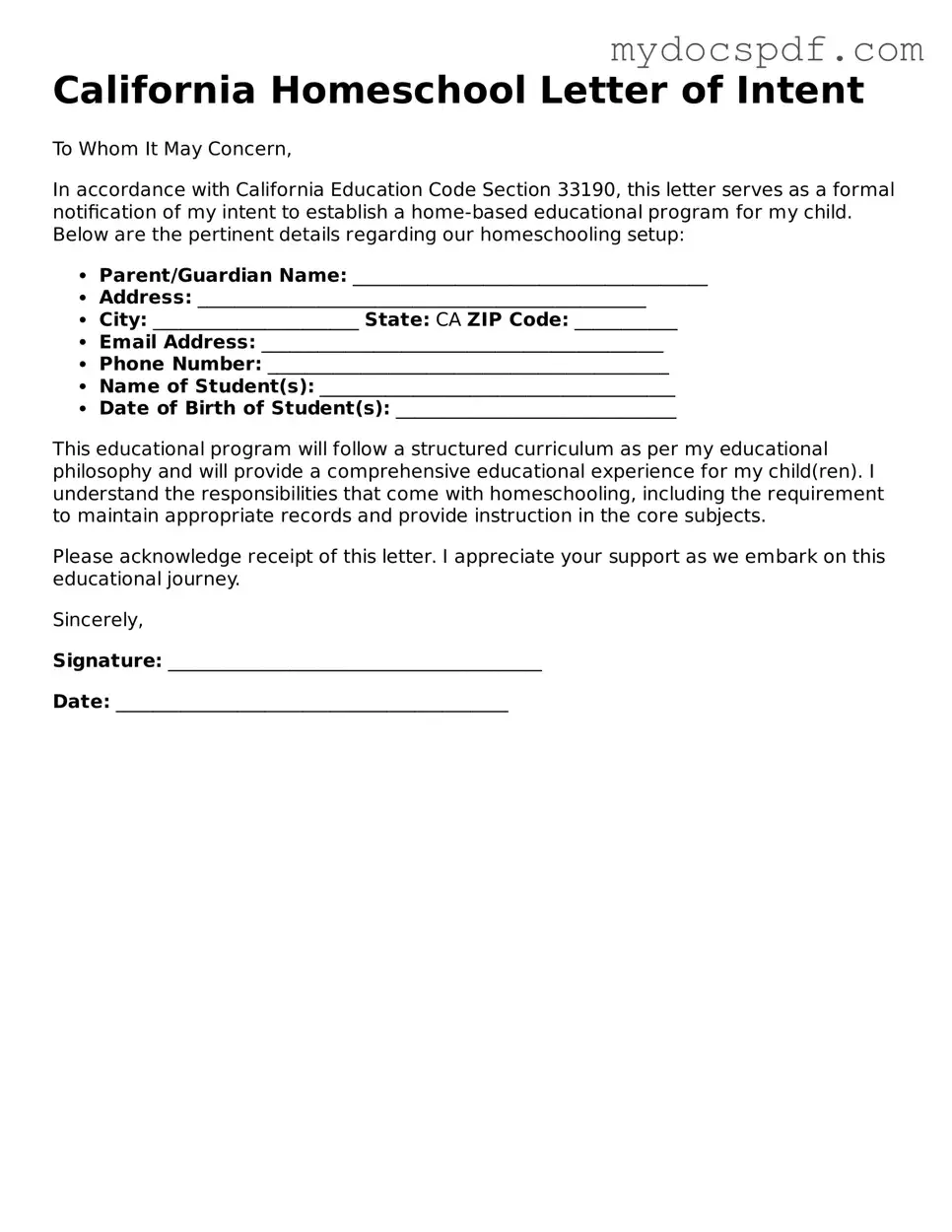California Homeschool Letter of Intent
To Whom It May Concern,
In accordance with California Education Code Section 33190, this letter serves as a formal notification of my intent to establish a home-based educational program for my child. Below are the pertinent details regarding our homeschooling setup:
- Parent/Guardian Name: ______________________________________
- Address: ________________________________________________
- City: ______________________ State: CA ZIP Code: ___________
- Email Address: ___________________________________________
- Phone Number: ___________________________________________
- Name of Student(s): ______________________________________
- Date of Birth of Student(s): ______________________________
This educational program will follow a structured curriculum as per my educational philosophy and will provide a comprehensive educational experience for my child(ren). I understand the responsibilities that come with homeschooling, including the requirement to maintain appropriate records and provide instruction in the core subjects.
Please acknowledge receipt of this letter. I appreciate your support as we embark on this educational journey.
Sincerely,
Signature: ________________________________________
Date: __________________________________________
